Rabab K. Ward
StyleMorpheus: A Style-Based 3D-Aware Morphable Face Model
Mar 14, 2025Abstract:For 3D face modeling, the recently developed 3D-aware neural rendering methods are able to render photorealistic face images with arbitrary viewing directions. The training of the parametric controllable 3D-aware face models, however, still relies on a large-scale dataset that is lab-collected. To address this issue, this paper introduces "StyleMorpheus", the first style-based neural 3D Morphable Face Model (3DMM) that is trained on in-the-wild images. It inherits 3DMM's disentangled controllability (over face identity, expression, and appearance) but without the need for accurately reconstructed explicit 3D shapes. StyleMorpheus employs an auto-encoder structure. The encoder aims at learning a representative disentangled parametric code space and the decoder improves the disentanglement using shape and appearance-related style codes in the different sub-modules of the network. Furthermore, we fine-tune the decoder through style-based generative adversarial learning to achieve photorealistic 3D rendering quality. The proposed style-based design enables StyleMorpheus to achieve state-of-the-art 3D-aware face reconstruction results, while also allowing disentangled control of the reconstructed face. Our model achieves real-time rendering speed, allowing its use in virtual reality applications. We also demonstrate the capability of the proposed style-based design in face editing applications such as style mixing and color editing. Project homepage: https://github.com/ubc-3d-vision-lab/StyleMorpheus.
Automatic Medical Report Generation: Methods and Applications
Aug 26, 2024
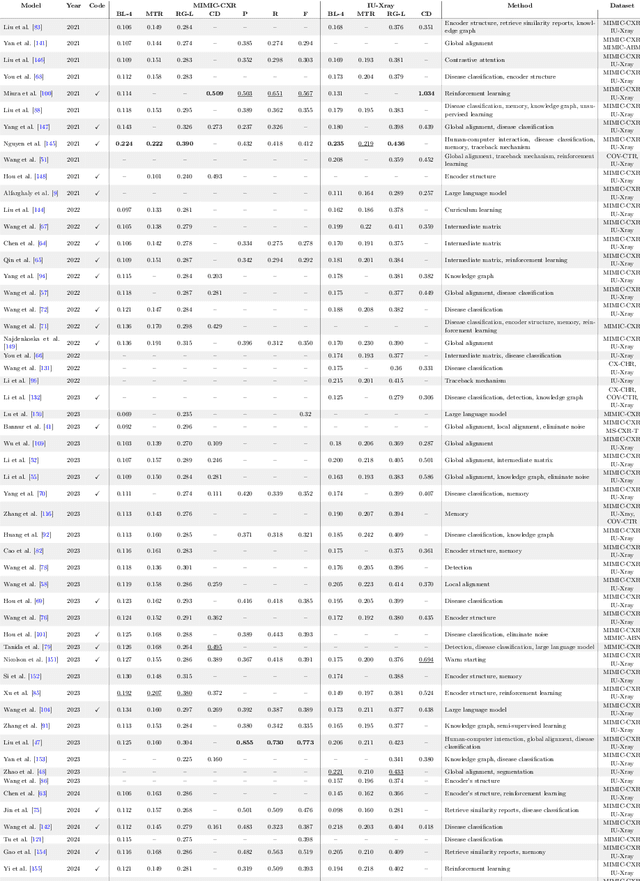
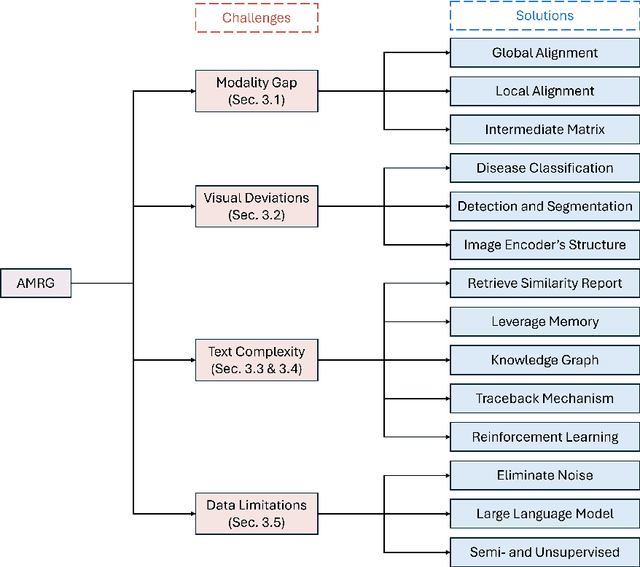

Abstract:The increasing demand for medical imaging has surpassed the capacity of available radiologists, leading to diagnostic delays and potential misdiagnoses. Artificial intelligence (AI) techniques, particularly in automatic medical report generation (AMRG), offer a promising solution to this dilemma. This review comprehensively examines AMRG methods from 2021 to 2024. It (i) presents solutions to primary challenges in this field, (ii) explores AMRG applications across various imaging modalities, (iii) introduces publicly available datasets, (iv) outlines evaluation metrics, (v) identifies techniques that significantly enhance model performance, and (vi) discusses unresolved issues and potential future research directions. This paper aims to provide a comprehensive understanding of the existing literature and inspire valuable future research.
Interpolation of CT Projections by Exploiting Their Self-Similarity and Smoothness
Mar 05, 2021



Abstract:As the medical usage of computed tomography (CT) continues to grow, the radiation dose should remain at a low level to reduce the health risks. Therefore, there is an increasing need for algorithms that can reconstruct high-quality images from low-dose scans. In this regard, most of the recent studies have focused on iterative reconstruction algorithms, and little attention has been paid to restoration of the projection measurements, i.e., the sinogram. In this paper, we propose a novel sinogram interpolation algorithm. The proposed algorithm exploits the self-similarity and smoothness of the sinogram. Sinogram self-similarity is modeled in terms of the similarity of small blocks extracted from stacked projections. The smoothness is modeled via second-order total variation. Experiments with simulated and real CT data show that sinogram interpolation with the proposed algorithm leads to a substantial improvement in the quality of the reconstructed image, especially on low-dose scans. The proposed method can result in a significant reduction in the number of projection measurements. This will reduce the radiation dose and also the amount of data that need to be stored or transmitted, if the reconstruction is to be performed in a remote site.
Automatic labeling of molecular biomarkers of whole slide immunohistochemistry images using fully convolutional networks
Dec 30, 2016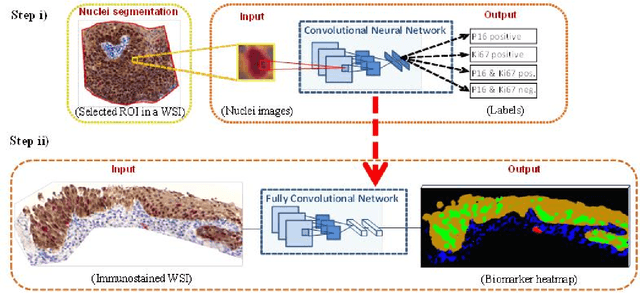

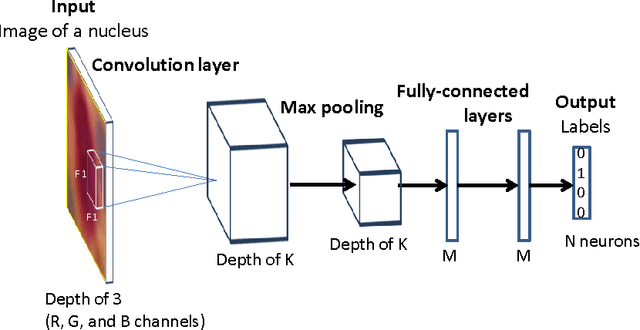

Abstract:This paper addresses the problem of quantifying biomarkers in multi-stained tissues, based on color and spatial information. A deep learning based method that can automatically localize and quantify the cells expressing biomarker(s) in a whole slide image is proposed. The deep learning network is a fully convolutional network (FCN) whose input is the true RGB color image of a tissue and output is a map of the different biomarkers. The FCN relies on a convolutional neural network (CNN) that classifies each cell separately according to the biomarker it expresses. In this study, images of immunohistochemistry (IHC) stained slides were collected and used. More than 4,500 RGB images of cells were manually labeled based on the expressing biomarkers. The labeled cell images were used to train the CNN (obtaining an accuracy of 92% in a test set). The trained CNN is then extended to an FCN that generates a map of all biomarkers in the whole slide image acquired by the scanner (instead of classifying every cell image). To evaluate our method, we manually labeled all nuclei expressing different biomarkers in two whole slide images and used theses as the ground truth. Our proposed method for immunohistochemical analysis compares well with the manual labeling by humans (average F-score of 0.96).
Image Similarity Using Sparse Representation and Compression Distance
May 07, 2013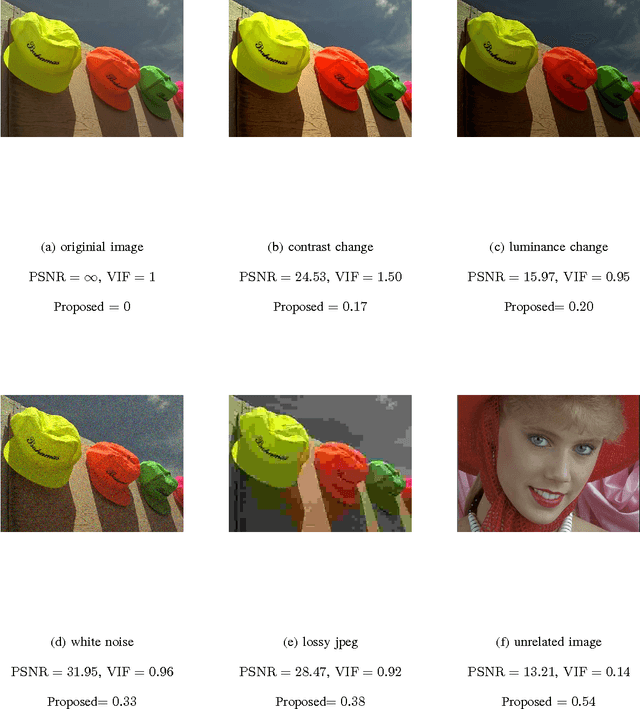

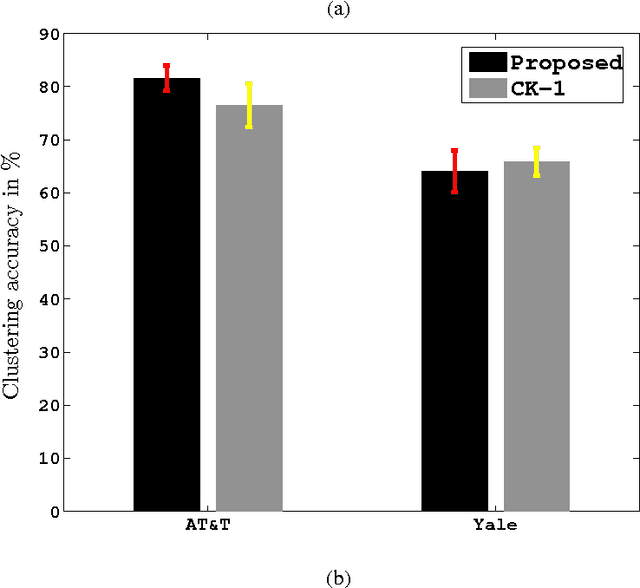
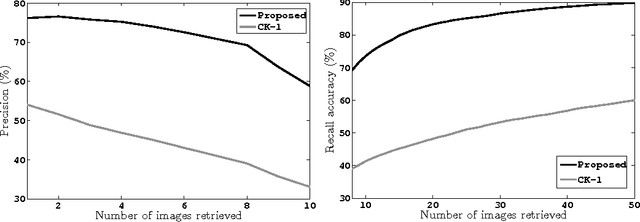
Abstract:A new line of research uses compression methods to measure the similarity between signals. Two signals are considered similar if one can be compressed significantly when the information of the other is known. The existing compression-based similarity methods, although successful in the discrete one dimensional domain, do not work well in the context of images. This paper proposes a sparse representation-based approach to encode the information content of an image using information from the other image, and uses the compactness (sparsity) of the representation as a measure of its compressibility (how much can the image be compressed) with respect to the other image. The more sparse the representation of an image, the better it can be compressed and the more it is similar to the other image. The efficacy of the proposed measure is demonstrated through the high accuracies achieved in image clustering, retrieval and classification.
 Add to Chrome
Add to Chrome Add to Firefox
Add to Firefox Add to Edge
Add to Edge